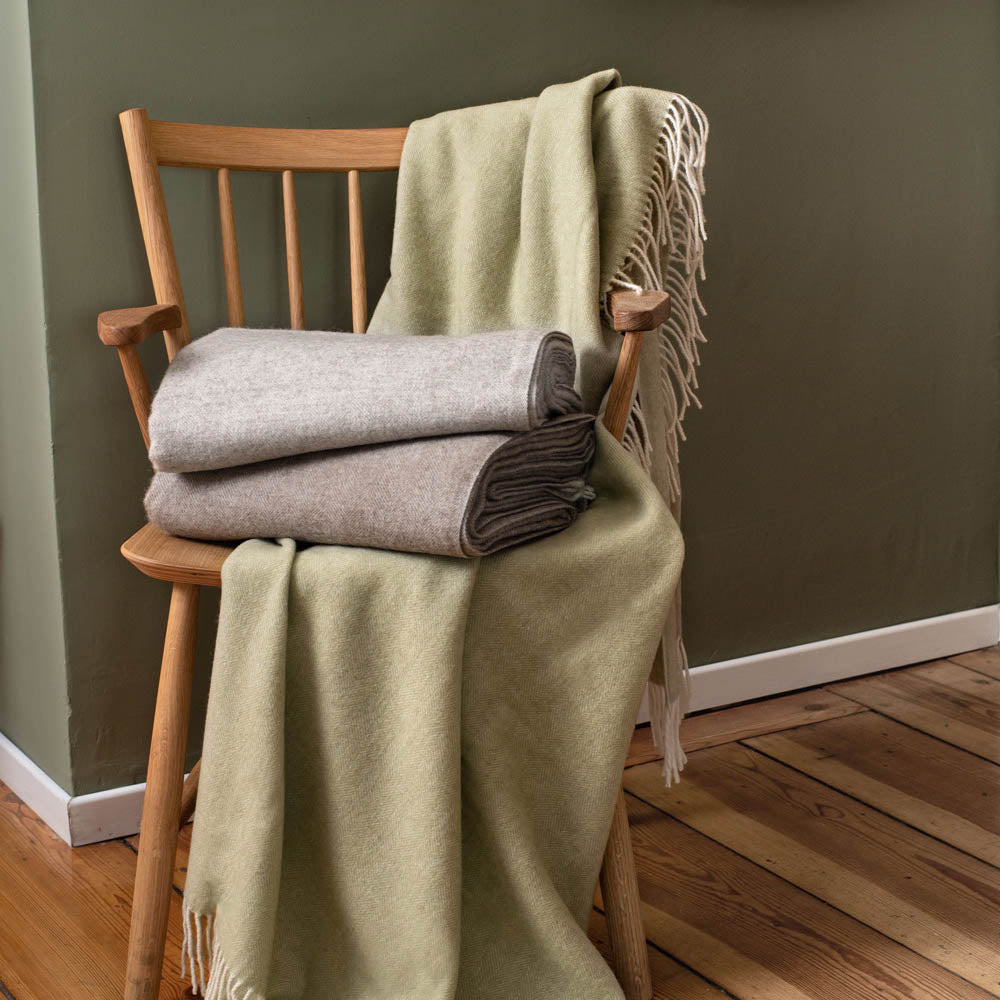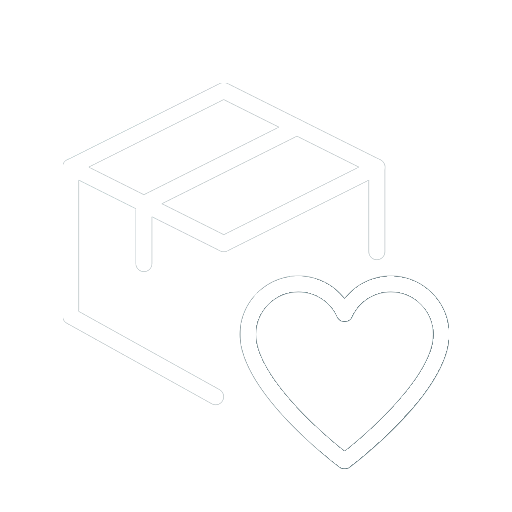7 tips on how to rid your home of harmful substances
Spring is just around the corner and with the upcoming spring cleaning we should think about a detox in our own four walls. Experts estimate that there are up to 30,000 different types of chemicals in our homes. Find out where these toxins are hiding and how to successfully home detox your home in this blog post.
Table of Contents
Where can toxic substances hide?
Hidden pollutants in household appliances and kitchenware
Rely on ecological wall paints and varnishes
Furniture & home accessories made from natural materials
Mattresses & textiles made of natural latex
Plants as room air purifiers
Make your own cleaning products
Important seal of approval
Where can toxic substances hide?
In all living areas we are surrounded by toxic substances in all forms that can harm us on a daily basis. These are hidden, for example, in mattresses and wall paints in the form of solvents, in carpets as insecticides, as softeners in floor coverings or in furniture with formaldehyde. Decorative objects such as candles can also contain questionable synthetic fragrances. However, a particularly high proportion of toxins can be found in household appliances made of plastic and in everyday cleaning products, which can emit toxic fumes or cause allergic skin reactions.
All of these pollutants are in the air or are ingested by us every day through skin contact or food intake. There are alternatives for everything that are completely harmless or at least have a significant reduction in harmful ingredients.
Hidden pollutants in household appliances and kitchenware
Many appliances in the kitchen are made of plastic or coated with plastic. Plasticizers added to plastics such as phthalates or bisphenol A, which ensure elasticity and formability, are particularly critical. They are suspected of having a negative effect on the hormone system and being harmful to health. Plasticizers are found in everyday items and are often found in foil, food packaging, rubber and plastic cutlery. Even the conventional baking paper is coated with plastic and we pick up the smallest particles that can come off every time. As an alternative, you can also use very simple greaseproof paper and brush some oil on it if necessary.
In the case of pans, it is the Teflon, also known as the plastic polytetrafluoroethylene (PTFE), that should be viewed critically. Although it practically prevents the burning of food, if the coated pan is heated too much, critical vapors are released that can be harmful to health. An uncoated stainless steel pan or cast-iron pan can be used as an alternative.
When buying the products, you should make sure that they contain as little plastic as possible, but are mainly made of materials such as glass, ceramics, paper and stainless steel.

Rely on ecological wall paints and varnishes
Many wall paints and varnishes contain toxic and chemical pollutants that pollute the air in the room and can lead to headaches and nausea. In particular, colors with preservatives can be harmful to health and cause allergic reactions. Therefore, care should be taken, especially in the bedroom, to use non-toxic wall paints as far as possible.
Ecological suppliers rely on natural silicate-based mineral paints that do not require preservatives or solvents. Lime paints help against mold growth because they are alkaline and therefore have a natural anti-mould effect.
When buying, look for paints made from clay, chalk or linseed oil. There are also solvent-free emulsion paints.
Manufacturer: nen-do.de , kreadino.de , Caparol Icons , File under Pop , Auro
Furniture & home accessories made from natural materials
The most sustainable thing is to spice up discarded and second-hand furniture and transform it into unique design objects. There are now many upcycling and DIY advice sites on how you can help an old collector's item to shine again.
When buying new furniture and home accessories, you should make sure that the materials are mostly natural and do not contain any synthetic substances, toxic paints or glues and that the products are of high quality. Tropical woods such as teak and rosewood should be avoided completely, as these are often illegally logged and have to be transported to us by container ships. Instead, make sure that the piece of furniture is made of local wood such as oak or pine from controlled forestry. The FSC seal currently offers the best possible proof of wood from sustainable management. You should also rely on solid wood and pay attention to the surface agents with which it is treated. A care product made from organic linseed oil and natural wax is usually sufficient.
The big advantage of high quality furniture is that it is more durable and robust. So you can enjoy it for a very long time and pass it on to generations.

With accessories made from natural raw materials that are responsibly sourced and processed, you can set up your home sustainably. These can be baskets or carpets made of seaweed, water hyacinth or elephant grass. These are obtained in their natural environment and are not contaminated with pesticides and toxins.
A big current trend is textile upcycling and vegan interiors such as leather made from cactus or lampshades made from mushrooms.
Manufacturer: Desserto , Tŷ Syml , FM UNIque Designs , Really.
Mattresses & textiles made of natural latex
Many cold foam mattresses are partially based on petroleum and are contaminated with pollutants due to synthetic materials. Since we spend a large part of our lives in bed and healthy sleep is so important, we should make sure when buying a mattress that it does not harm our health. Ecological mattresses made of natural latex or coconut latex are a bit more expensive, but they are free of harmful substances.
With duvets and pillows, you should make sure that the cover is synthetic-free and, if possible, made of 100% cotton. There are even suppliers you can send your old down comforters to, who will recycle them, refurbish them, and ship them back to you in a new case.
The naturalness of the materials also plays a major role in textiles if you want to furnish yourself sustainably. Make sure that the materials are made of natural materials such as 100% organic cotton or linen and are produced in an ecologically and socially responsible manner.
Manufacturer: Kipli , snuuz.de

Plants as room air purifiers
Some plants have a cleansing effect and can filter pollutants such as formaldehyde and fine dust from the air and convert them into oxygen. The top plants that have an air-purifying effect are the scrunchie, ivy and the Kentia palm. Also read our blog post "Green Living: Why plants are important for us and our home" .

Make your own cleaning products
Did you know that many conventional detergents and cleaning agents from the supermarket and drugstore contain a variety of complex and harmful ingredients that pollute the wastewater with toxic chemicals and are not biodegradable? These include fragrances and dyes, preservatives, paraffins and silicones. Many detergents also contain optical brighteners that can trigger allergic reactions.
You can quickly and easily create your own range of cleaning products using simple home remedies that almost all of us have at home anyway. And it is completely free of chemicals and pollutants.
For a solid basic equipment you only need soda, baking soda, vinegar, citric acid and curd soap. You can spice up the cleaning products with a few essential oils like lavender and rosemary. You can use it to make the following cleaners: dishwashing liquid, detergent, scouring paste, all-purpose cleaner, vinegar-based cleaner, glass cleaner, floor cleaner and toilet cleaner. You can find plenty of instructions on the internet.
And making your own has many advantages: In addition to saving plastic waste and money, you are doing something good for your health and the environment.

Important seal of approval
When buying, pay attention to well-known seals of approval and certified products. The independent organizations check the ingredients and ensure that environmental standards are met.
Quality seals such as the GOTS seal and the very latest "Made in Green by OEKO-Tex seal" guarantee that textile products are free from harmful substances and produced under fair conditions. The Goodweave seal of approval guarantees that the rugs were not manufactured using child labour.
You can find more information about test seals and certificates here.
This article contains external links to providers. nordery does not receive any money for this and has listed them in a purely editorial context. nordery assumes no liability for the information provided by the manufacturer.









Leave a comment